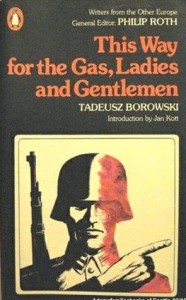When I was growing up, I was no stranger to Patti Smith. My brother had “Horses, Easter and Wave” in his album collection, which I sometimes borrowed and listened to. Every other month it seemed I’d come across Smith in rock magazines like CREEM and Rolling Stone. She was an exotic androgynous rocker making noisy music beyond anything I’d ever heard before. So decades later, when I learned she’d written a memoir, Just Kids, about her relationship with Robert Mapplethorpe, I was surprised. What I’d remembered of Mapplethorpe came from an exhibition in Chicago in 1989. Intense images, often homoerotic, through a Michelangelo type of lens. So I had to read this memoir to see how these two very different people living in what I thought were two very different worlds had started out together.
Patti Smith and Robert Maplethorpe were Just Kids
Patti Smith came to New York City from a loving family in New Jersey. She wanted to be an artist. Instead she arrived in NYC without money, food, or friends. She slept on the streets. There she met a young Mapplethorpe who wanted to be an artist too. He was also without money, food, or friends, and sleeping on the streets. Easily enough they came together and began both an artistic and romantic relationship that lasted until Mapplethorpe’s death in 1989.
After reading Just Kids, I’ve found a deeper appreciation for Mapplethorpe’s work. And not just his work, but his approach to the creation of art. He took the darkness that was thriving inside and turned it outward to produce intense beautiful images. Some are shocking, some are lovely, and all of them are what they are. I can’t say the same thing about Patti Smith. She wasn’t as troubled by her childhood, seemingly, as Mapplethorpe was. She made her way into music through her poetry, which later turned into lyrics as she discovered the joy and empowerment of rock and roll. And it’s her deft poetic eye for detail while also saying something larger that makes this book valuable for any writer to read.
Jumping into the Poetry of the Moment when Writing Prose
There aren’t a lot of segues in Smith’s narrative. It’s as if she’s stringing together the pearls on a necklace of time, sharing one vignette of her and Robert before moving on to the next with only the briefest explanations of changes in space and time. But this is what’s elegant about this book, we don’t plod through all the day-to-day stuff, Smith treats us only to the sublime. Take this passage, which introduces Mapplethorpe for the first time:
“His young eyes stored away each play of light, the sparkle of a jewel, the rich dressing of an altar, the burnish of a gold-toned saxophone or a field of blue stars. He was gracious and shy with a precise nature. He contained, even at an early age, a stirring and the desire to stir.”
Through rich imagery, these sentences embody a young artist with his own unique vision, showing us what he saw, what he remembered, what was important to him. She then opens up the language and shares with us that he had a “precise nature” and contained “a stirring and the desire to stir.” This last play on words resonates because with the earlier concrete descriptions we’re already imagining whatever Mapplethorpe photos we might have seen – and if we haven’t seen his work, we’re compelled by this luscious nugget to explore them. Smith has taken us on a brief profound journey of not only Mapplethorpe’s vision but his personality as well and how those two melded into his later art.
Smith carries this tender, evocative tone throughout the book. Somehow she makes bumping into Jimi Hendrix seem like a nonchalant, sweet encounter or a run-in with Allen Ginsberg an awkward moment that the two would chuckle about later. And that’s another magnetic aspect of this book: Smith wasn’t just Robert Mapplethorpe’s lover, she ended up in relationships with other key players in the art and music world as well (Sam Shepherd, Allen Lanier) while growing friendships with the likes of Jim Carroll, Todd Rundgren, and William S. Burroughs. That she maintains such a humble and almost girl-next-door view of it all makes this story a most accessible and charming read.
If this review made you want to read the book, pick up a copy of Just Kids from Bookshop.org. Your purchase keeps indie booksellers in business and I receive a commission.
 In terms of historical importance, little more can be said of This Way for the Gas, Ladies and Gentlemen. It, like Night, is a testament to the Nazis’ atrocities at Auschwitz. While contemporary novels wink at us with wit and an ironic tone, Tadeusz Borowski’s work floats above like a wise parent whose wrenching past overwhelms the smallness of our daily distractions and grievances. To say it’s one of the most valuable books of the twentieth century is a meager compliment.
In terms of historical importance, little more can be said of This Way for the Gas, Ladies and Gentlemen. It, like Night, is a testament to the Nazis’ atrocities at Auschwitz. While contemporary novels wink at us with wit and an ironic tone, Tadeusz Borowski’s work floats above like a wise parent whose wrenching past overwhelms the smallness of our daily distractions and grievances. To say it’s one of the most valuable books of the twentieth century is a meager compliment.